Cats and dental disease, it’s a fact of life. Cleaning a cat’s teeth, unless you start from very young (I mean as soon as they are weaned) can be at best, difficult, at worst painful. For both you and the cat. My cats certainly won’t let me near them with cat toothpaste; they run and hide as soon as they see me coming with it. So is there anything you can do to help prevent plaque build up in cats?

Cats' Teeth
by Telesto
Cats are just as prone to dental disease as those of humans. The difference is, a cat can't hold a toothbrush. So what can you do?
Clean Those Teeth!
When my vet told me that I needed to start cleaning my cats’ teeth I laughed, thinking he was joking. He wasn’t. I tried telling him that I valued my fingers and that, as a writer, they were very useful to me, but he insisted. He was not fooling around, I had to try to clean their teeth, if not, he would have to put my dear Telesto under anaesthetic in order to scale and polish her teeth. Her teeth are the worst but none of my girls is excluded from this problem.
I duly bought cat toothpaste and toothbrushes from the vet. Cat toothpaste is not like human toothpaste, by the way. The one I bought is chicken flavoured, and is more like Bonjela than Blanx. By the way, never use human toothpaste, it may contain ingredients that are poisonous to cats. The toothbrushes are just like microfiber finger stools although I have since seen things that are more like brushes.
I am ashamed to tell you that my attempts at tooth cleaning have been an unmitigated disaster. I have put more toothpaste on my furniture and the cats’ cheeks than I have their teeth. They run away now as soon as they see me with the tube of toothpaste and it looks as though my poor girl will have to undergo anaesthetic.
I should say at this point that I have not been completely derelict in my duties as a pet owner. I use, and have used for many years, something called PlaqueOff. This is made from a special type of seaweed and is supposed to reduce plaque, tartar and bad breath. It’s a green powder that you sprinkle on their food. The manufacturers add Brewer’s yeast to the cat version as, apparently, cats really like Brewer’s yeast. I also buy the “veterinary” dental cat food that is meant to help with managing plaque. I know they eat all of this stuff, and my feline food bills are enormous (my girls are worth it) but it isn’t helping. I’ve also recently discovered cat treats that are supposed to be good for their teeth, but my jury is still out on them.
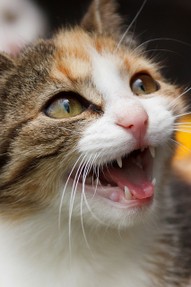
So what is dental disease?
It seems that dental disease is very common in cats - some statistics say that 85% of cats over three years old have some sort of dental disease. Moreover, it tends to get worse as the cat gets older, and it’s all related to the dreaded Dental Plaque.
There are no surprises here; it’s the same as with humans. Dental plaque is what is known as biofilm bacteria, literally densely packed bacterial cells that develop naturally on the surface of teeth. The experts don’t know for sure, but some think that this may be part of the body’s natural defence mechanism to help prevent pathogenic bacteria invading the mouth. I think, that because teeth don’t “shed” in the same way that skin does, animals are unable to prevent a build up of plaque without some form of intervention.
At the start, plaque can’t be seen by the naked eye, but it is visible with the use of disclosing tablets or solution that stains the affected areas of the teeth. (If I can’t get my cats to let me clean their teeth, I am not even going to bother trying disclosing tablets!)
Left untreated, plaque hardens and forms what is called Dental Tartar or Calculus. This is the yellowish coloured stuff that you can see, and it’s this that my girl is going to have to have scraped off.
If this isn’t enough, dental disease is associated with a greater risk of heart disease, in both cats and humans.

What’s the Cause?
There are a number of contributory factors; I suppose they are much the same as in humans. These include:
- The alignment of the teeth - if the teeth are no in the correct position, plaque build up is more likely. Some breeds, such as Persians and other short nosed varieties, are particularly prone to this problem. Some of these breeds don’t have mouths that are big enough for all their teeth. Sometimes the milk teeth don’t fall out when they should, so that causes a problem. And sometimes there is congenital abnormality or an accident causes a change in the jaw shape.
- Diet - cats that are only fed soft food are thought to be more prone to dental disease because there is no abrasion in the mouth to prevent the build up. However, I have to say that this is not the case with my cats, they only get a very small amount of wet food, and that’s just to make it easier for me if I need to give them tablets. (One of them is on daily medication and, try as I might, I cannot give her tablets the way the vet does. I’m too afraid of hurting her.)
- Infectious diseases - unsurprisingly, diseases such as Feline Immunodeficiency virus (FIV) or Feline Leukaemia Virus (FeLV) may cause immunosuppression, which can lead the cat to be more inclined to dental disease.
- Oral dental care - lack of any home dental care. I don’t think I should say anymore about this!
- Genetics - some cats are probably genetically more predisposed to developing dental disease than others.
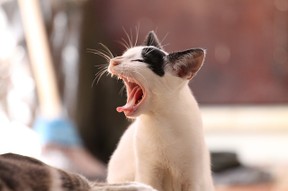
Prevention
Vets recommend that cats should have their teeth checked at least annually (my vet has recently started a loyalty programme where I pay them a certain amount every month, that includes the cost of their vaccinations, flea and worming treatments and two check-ups a year).
The problem with cats, more so than dogs, is that when they go out on their travels, we owners don’t know where they go or who else feeds them. (I know that Telesto gets food elsewhere because one of my neighbours has told me that she’s given her ham. She is a greedy girl!)
I’ll talk to the vet again when I take her back in a couple of weeks, but I fear she will have to have surgery. If anyone has any suggestions as to what else I can do to prevent this problem from recurring, please do let me know.
PS I took my little ones to the vet today, and he said that their teeth were nowhere near as bad as I had feared. In fact, only one of them had a very small area of plaque, which seems to me to indicate that the dental treatments are having a positive effect!
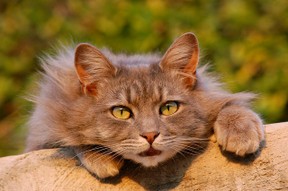
You might also like
Why Do Cats Throw Up After Eating?Has your vet declared your cat 'perfectly healthy', but is it still throwing ...
How to Potty Train Your Cat on the Toilet - Cat Toilet Trainin...Ditch the litter box forever. If I can potty train my kitty to use the toilet...
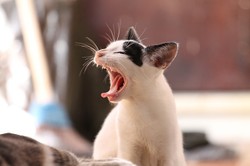









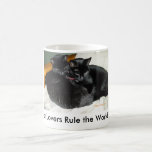

 Identity Theft and How it Feelson 02/01/2015
Identity Theft and How it Feelson 02/01/2015
 Barts Hospital - a National Treasureon 01/24/2015
Barts Hospital - a National Treasureon 01/24/2015
 Urban Foxeson 01/11/2015
Urban Foxeson 01/11/2015
 How do you know which hosting platform to choose?on 01/03/2015
How do you know which hosting platform to choose?on 01/03/2015

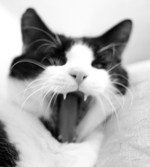
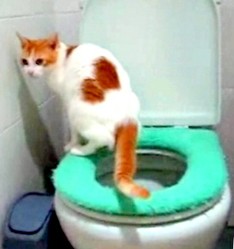
Comments
Yes, I think you have to start when they are kittens though. None of mine will allow me near them with cat toothpaste, and I am rather fond of my fingers! Lol!
I did have a cat once that lost all his teeth but he was OLD like 20 when it happened. It is smart to get their teeth cleaned annually if possible.
Yes but they tend to have a very high pain tolerance and they can't tell us something us wrong. One of my vets told me of a case of a cat that had been walking on a broken leg for weeks, without any sign of pain. They are quite amazing.
I imagine dental disease would be very bad for cats, as it is for the rest of us.